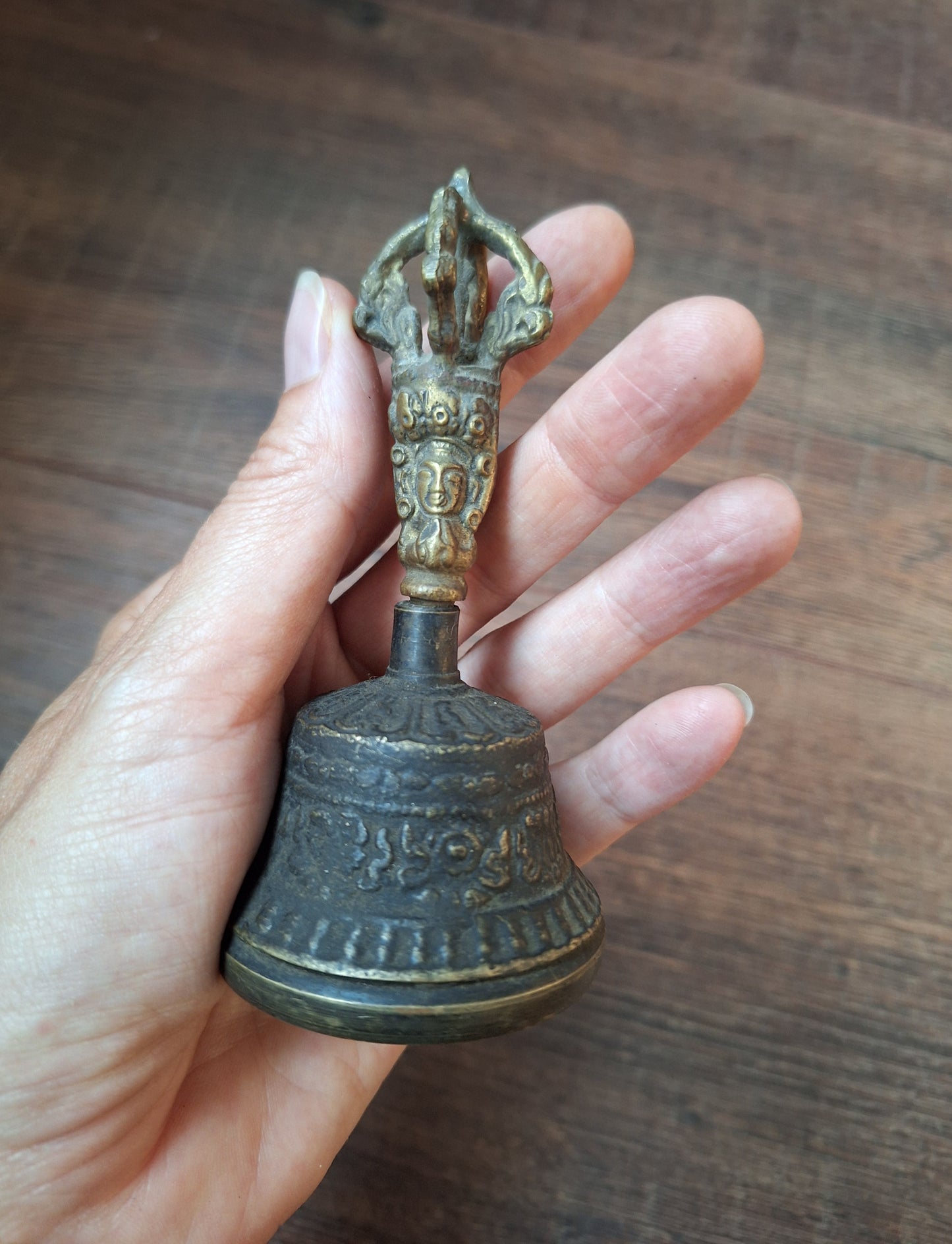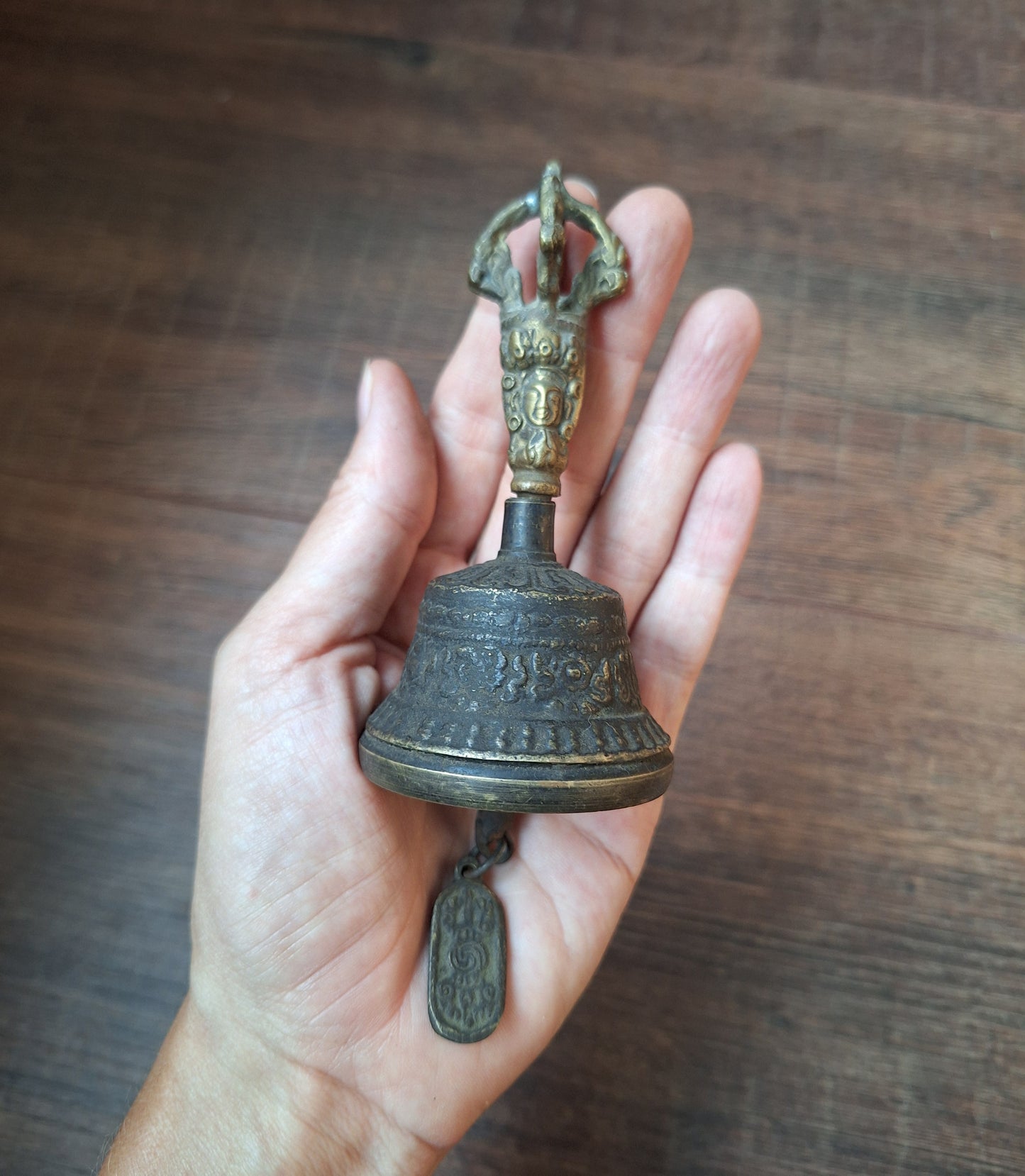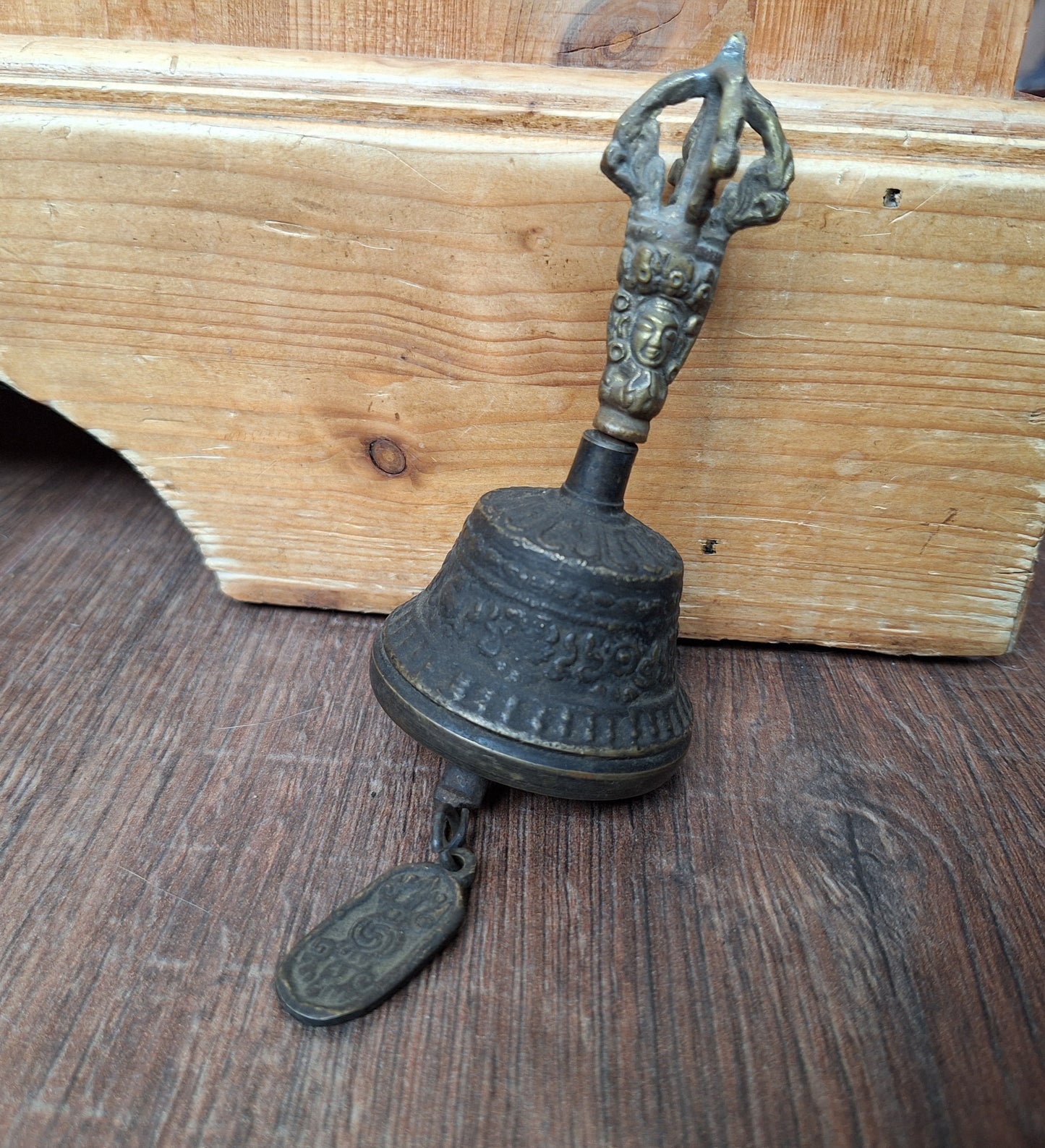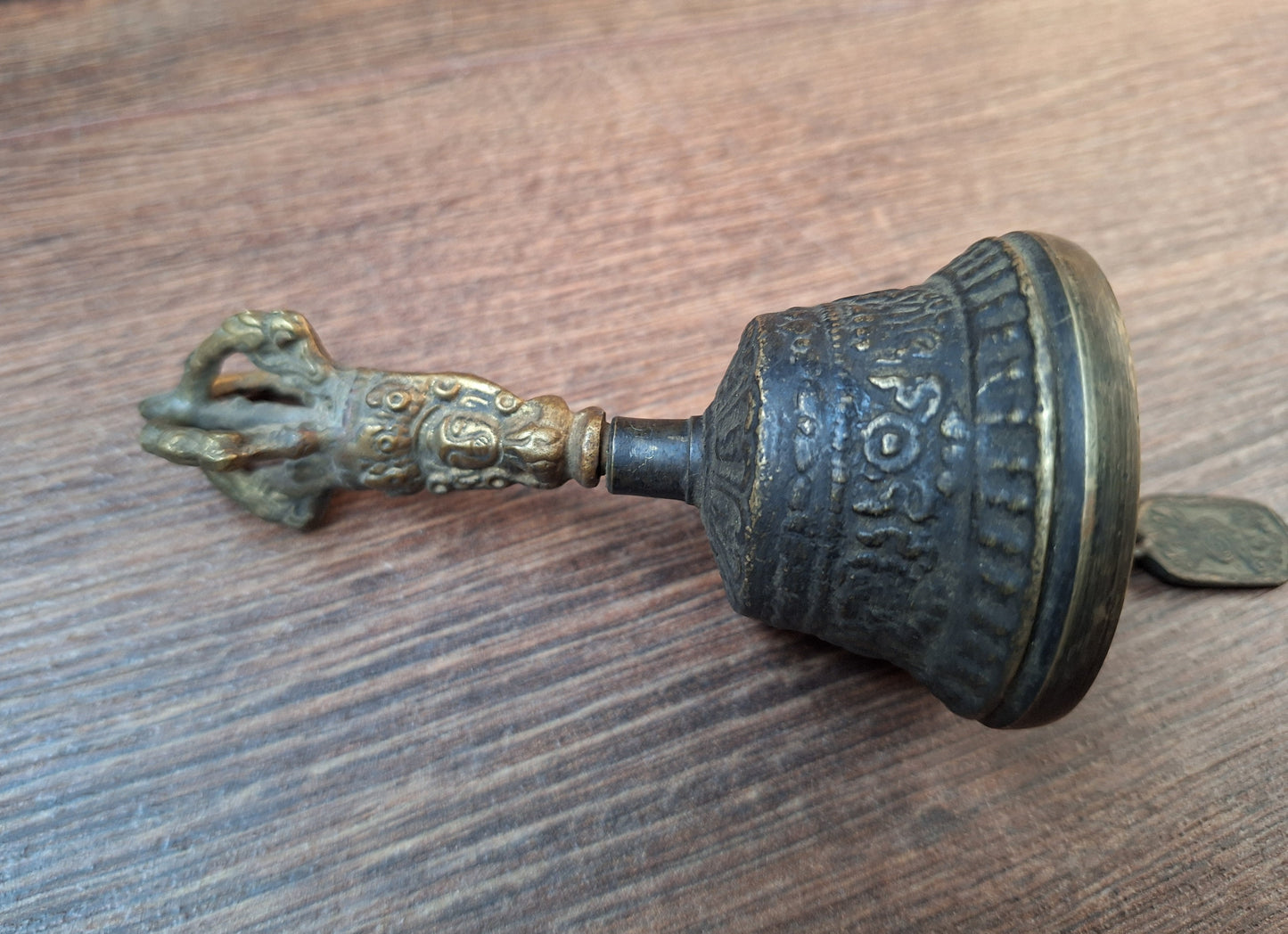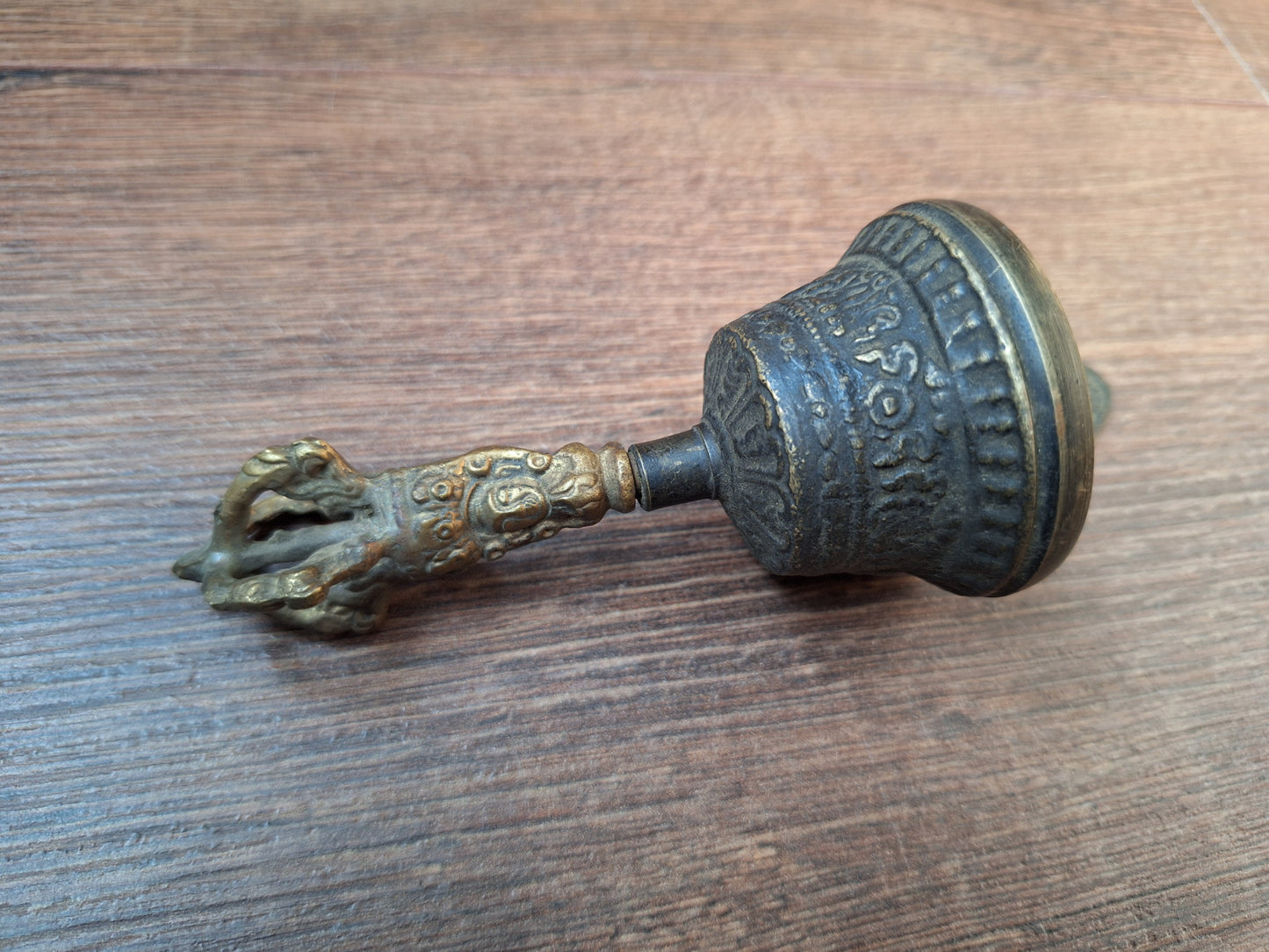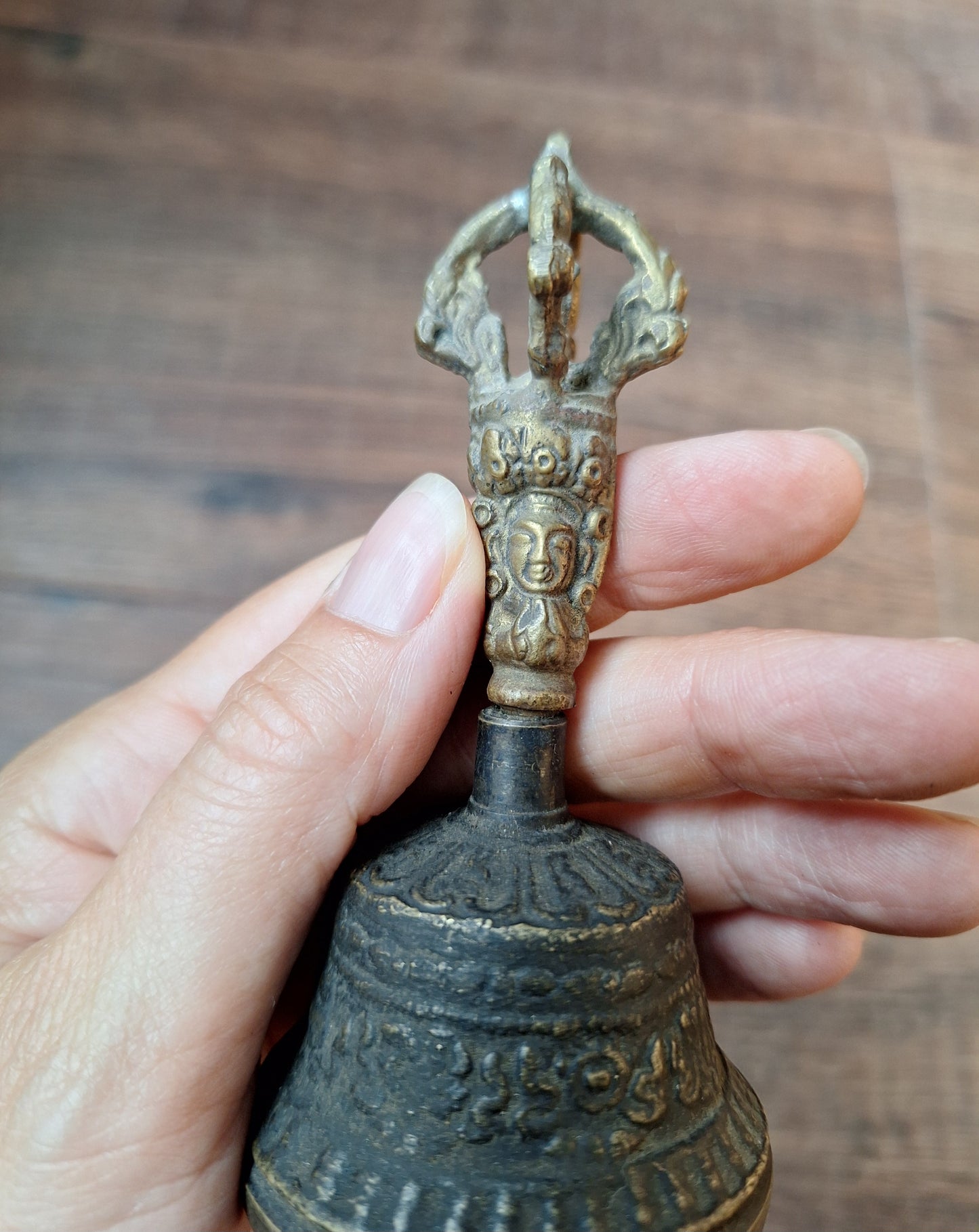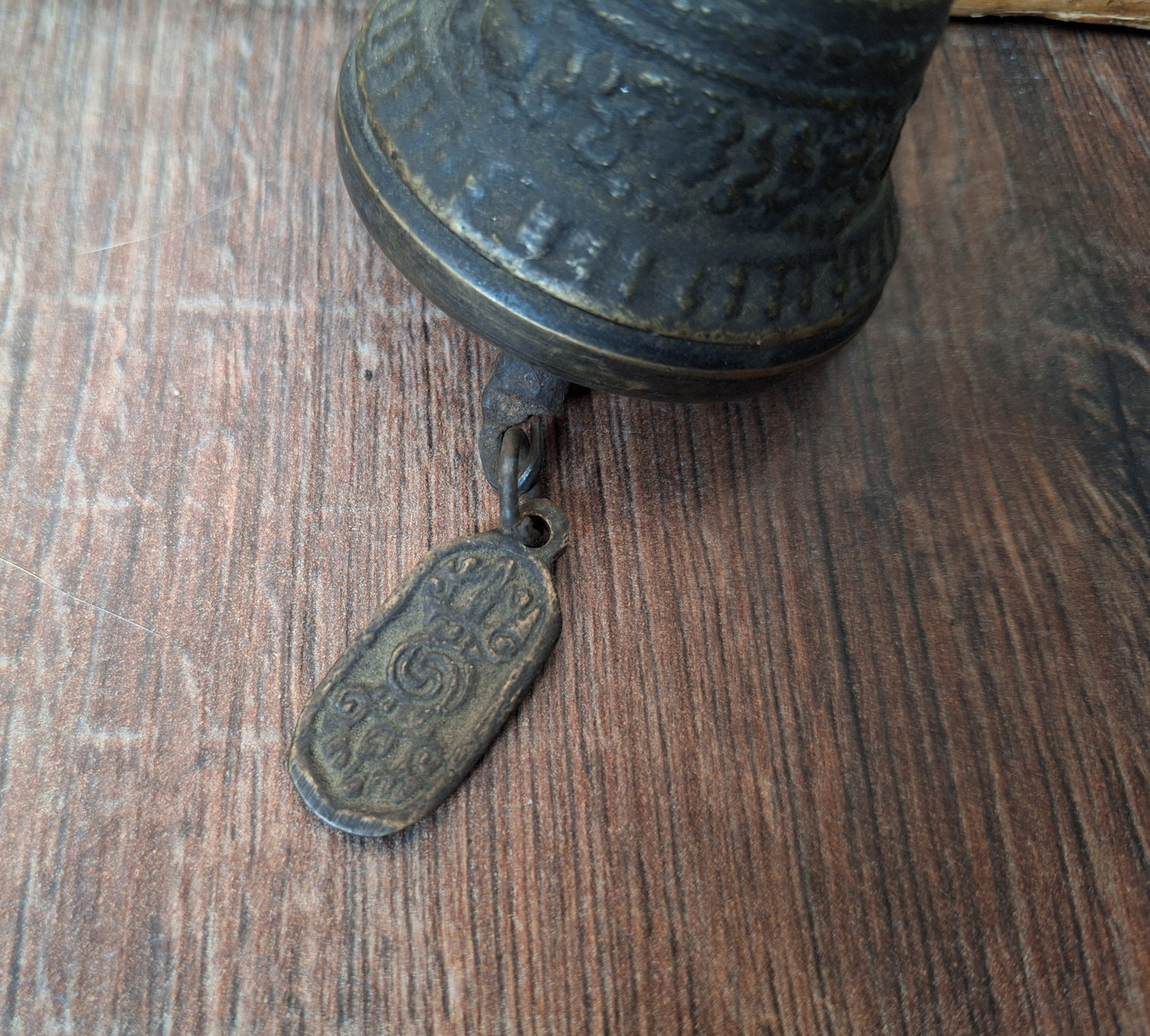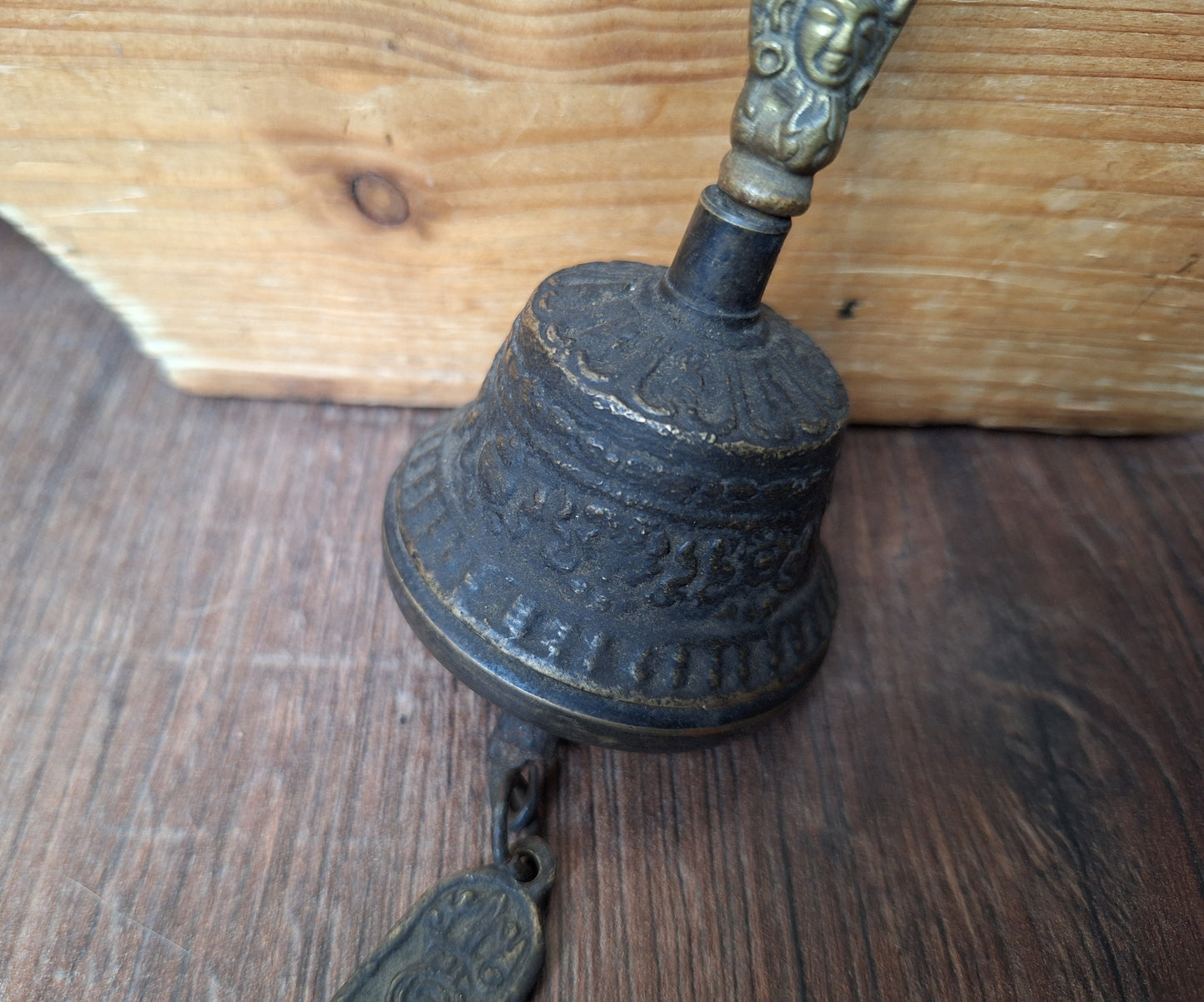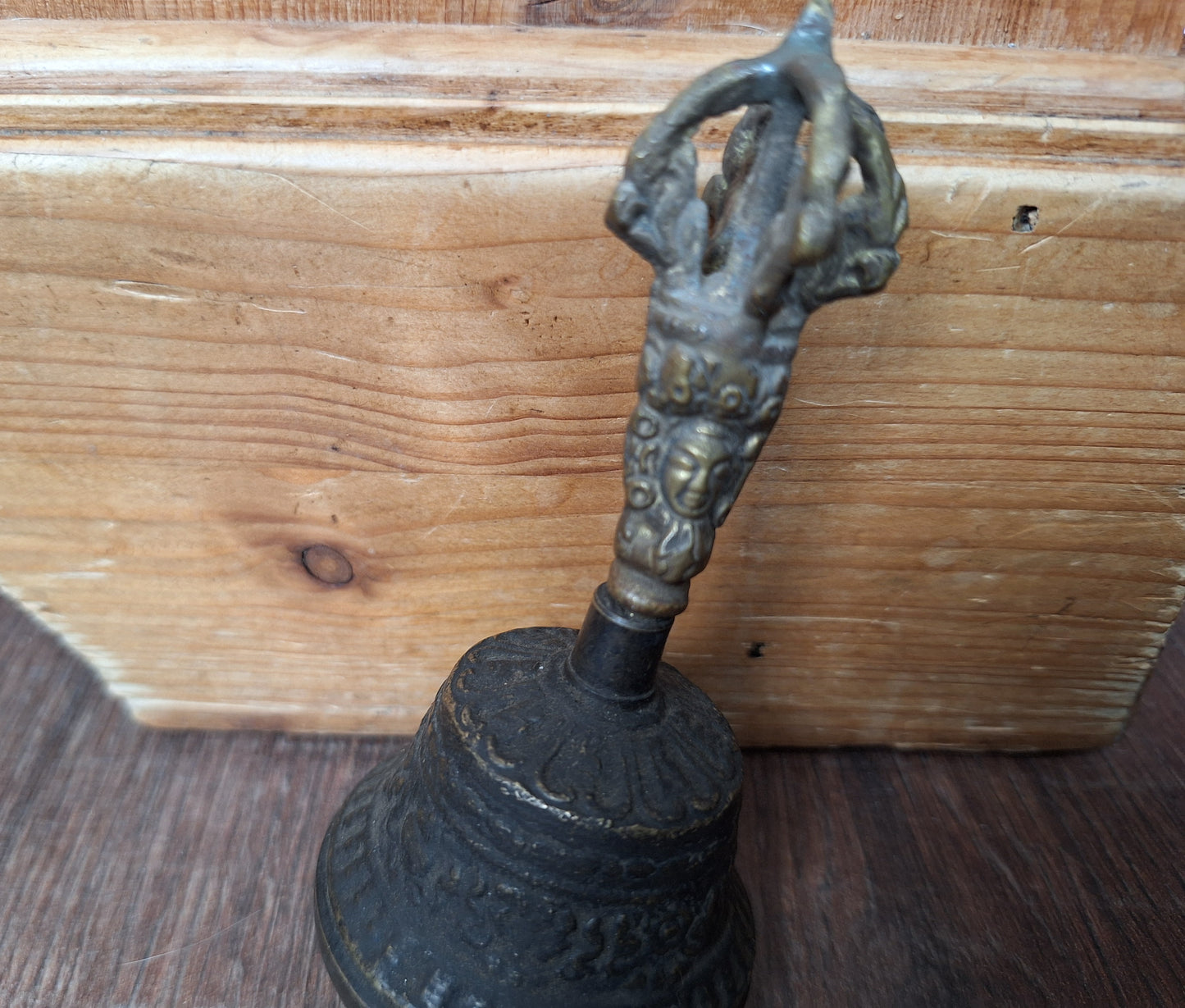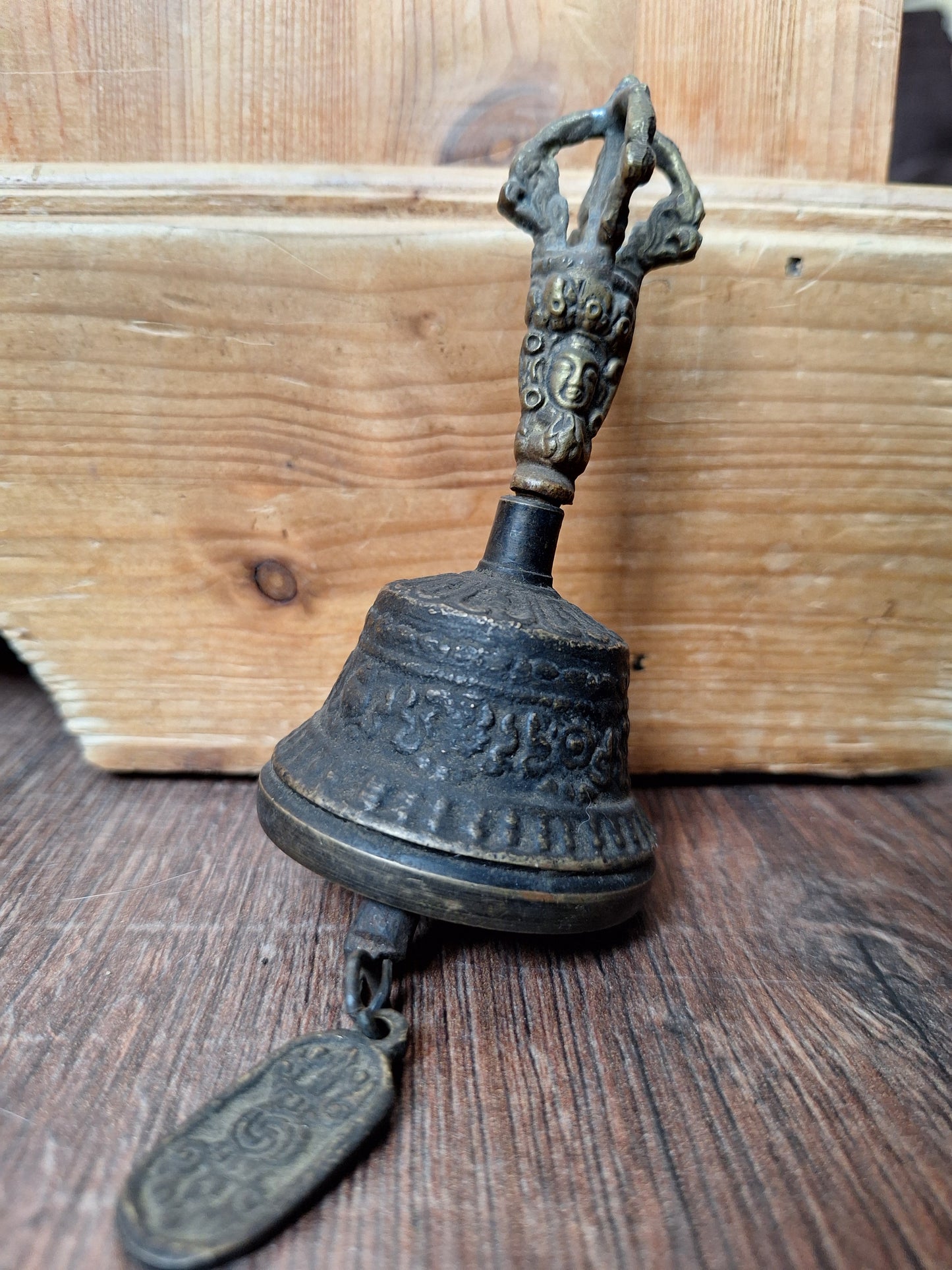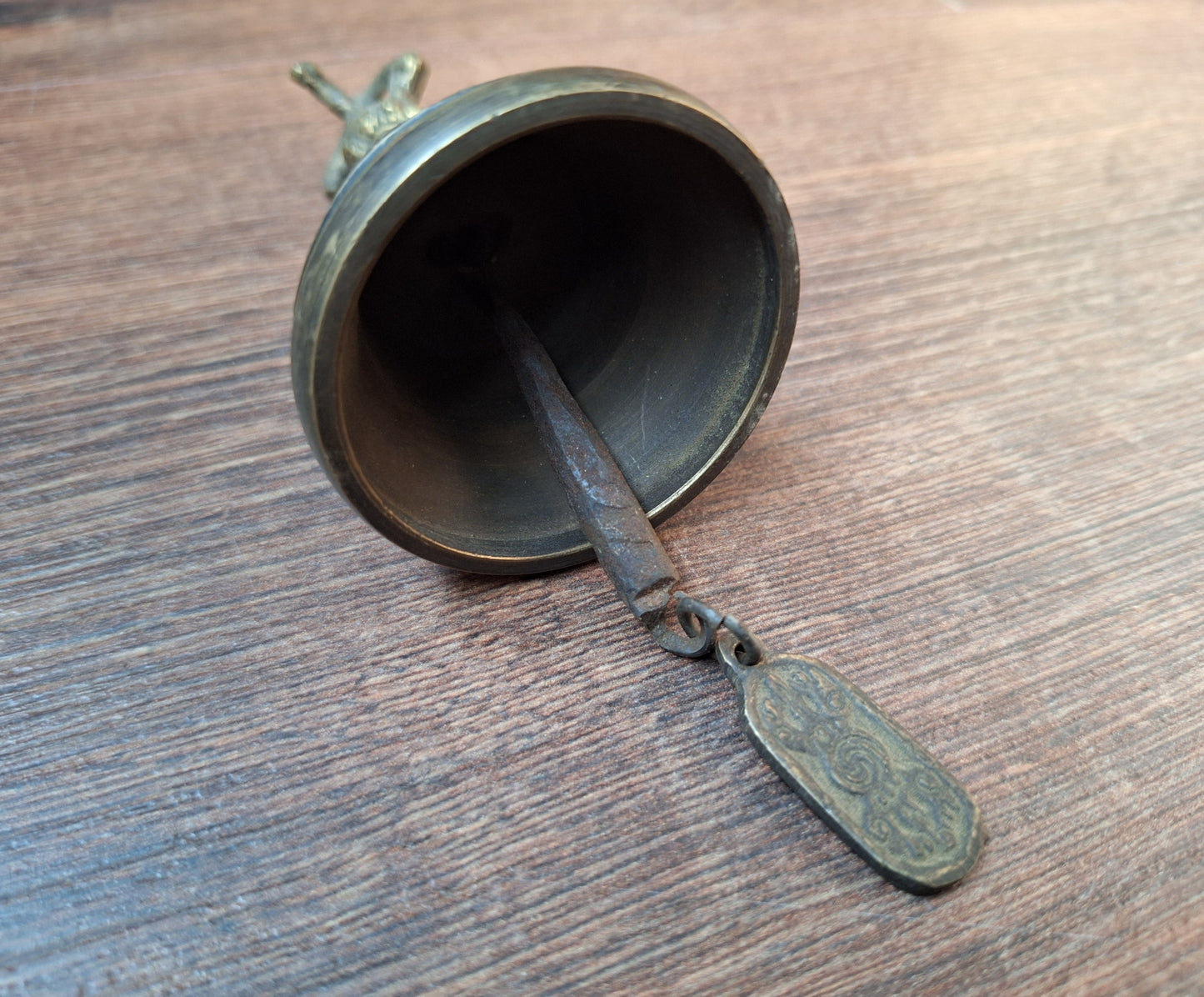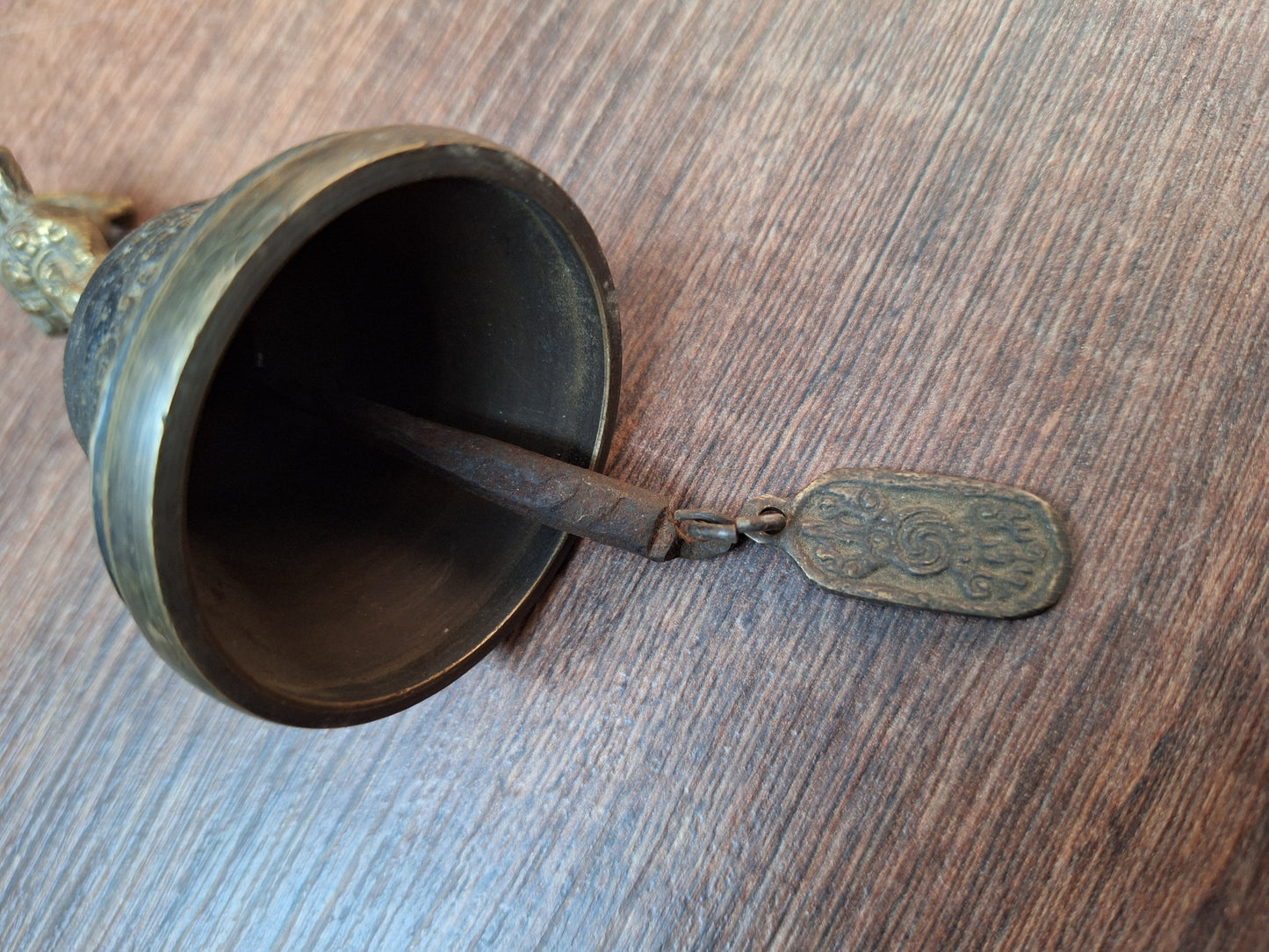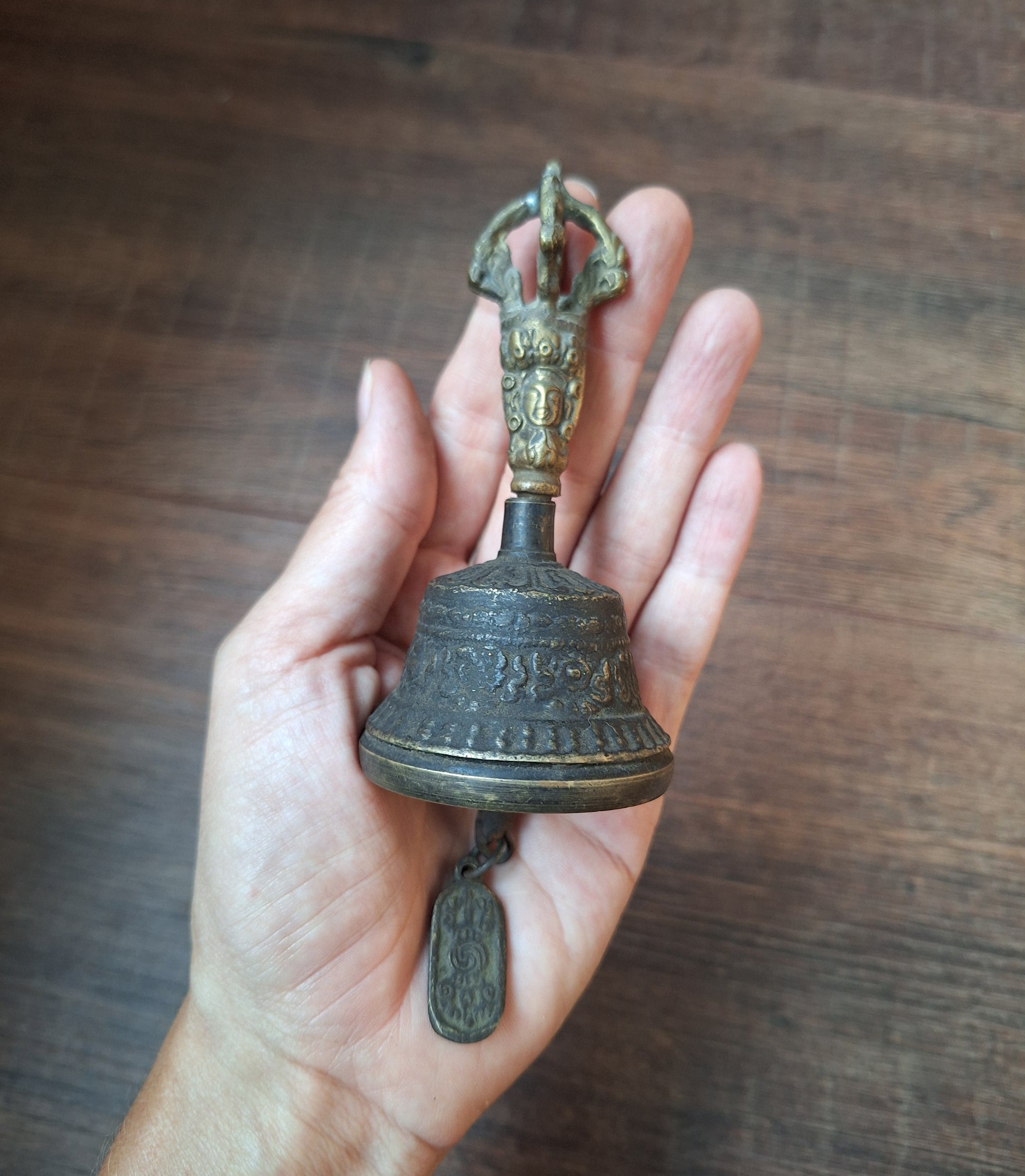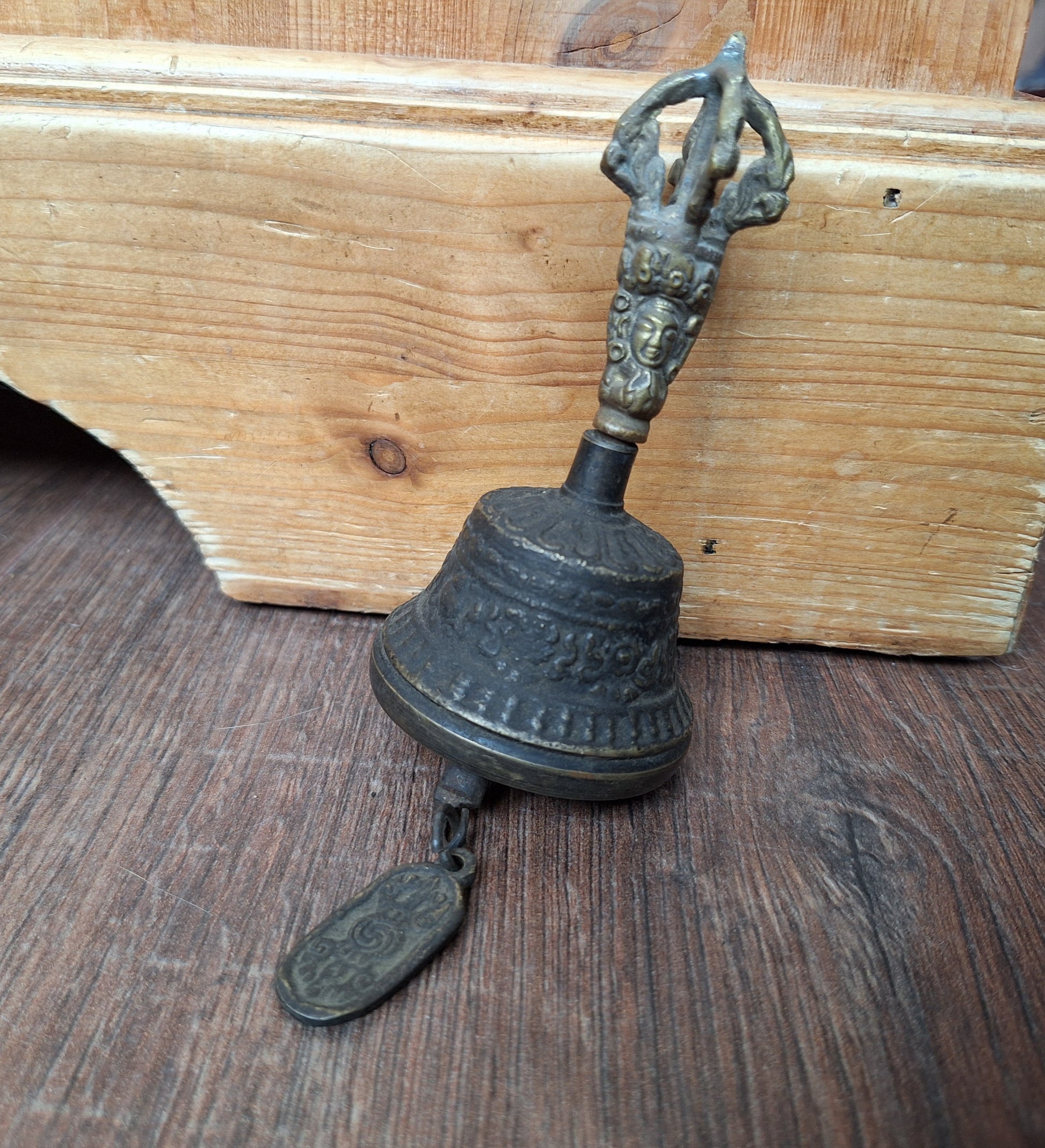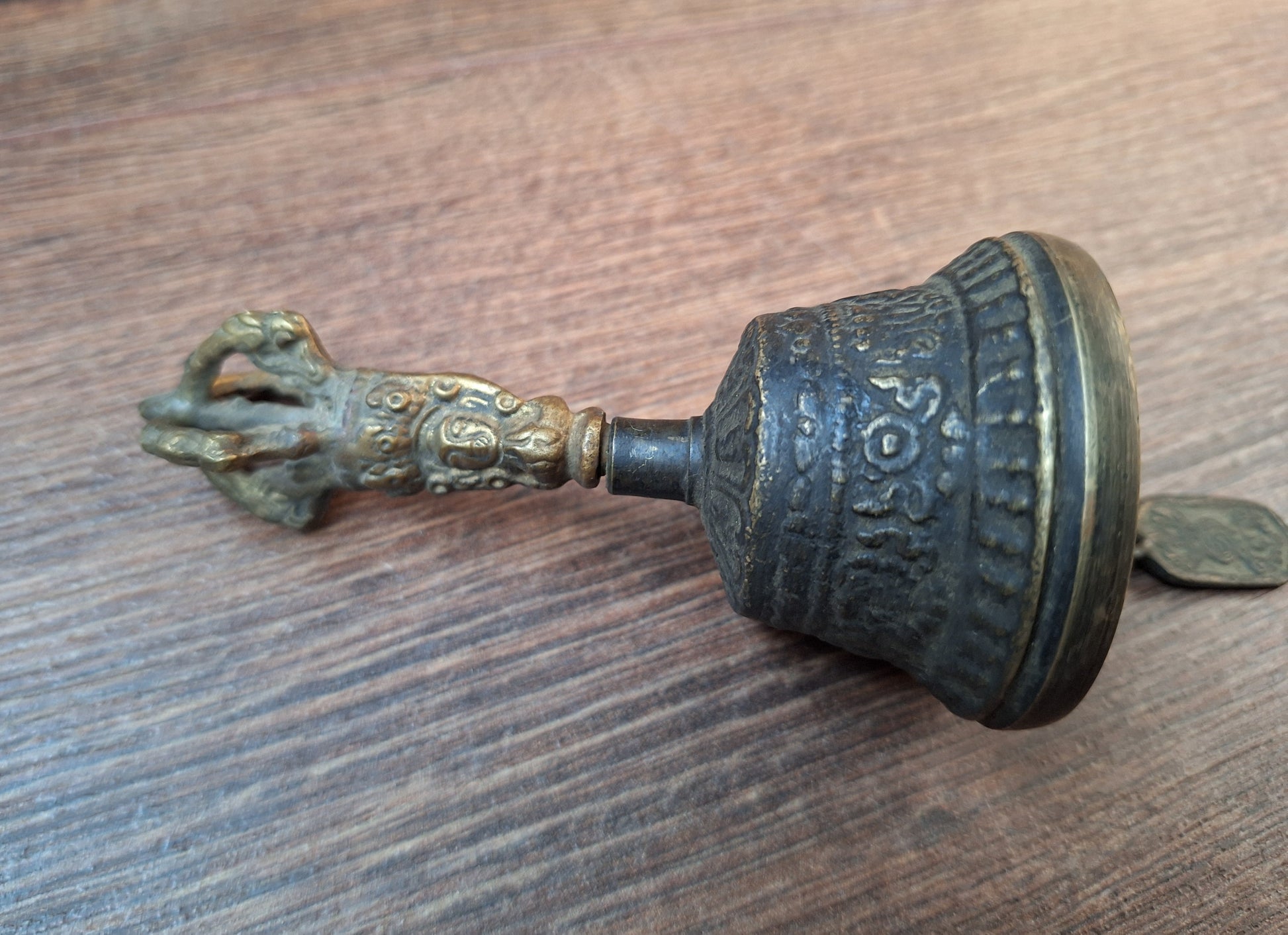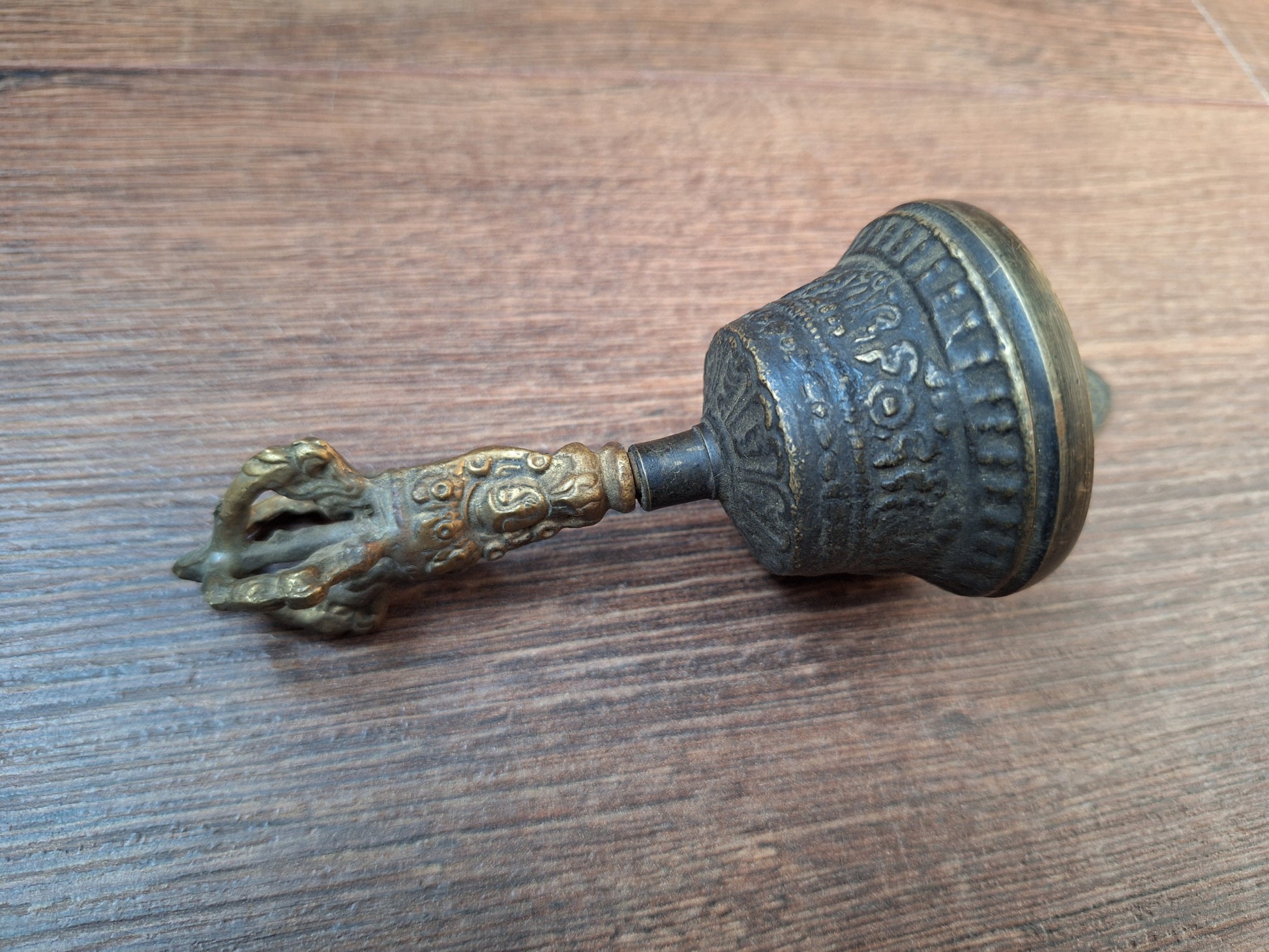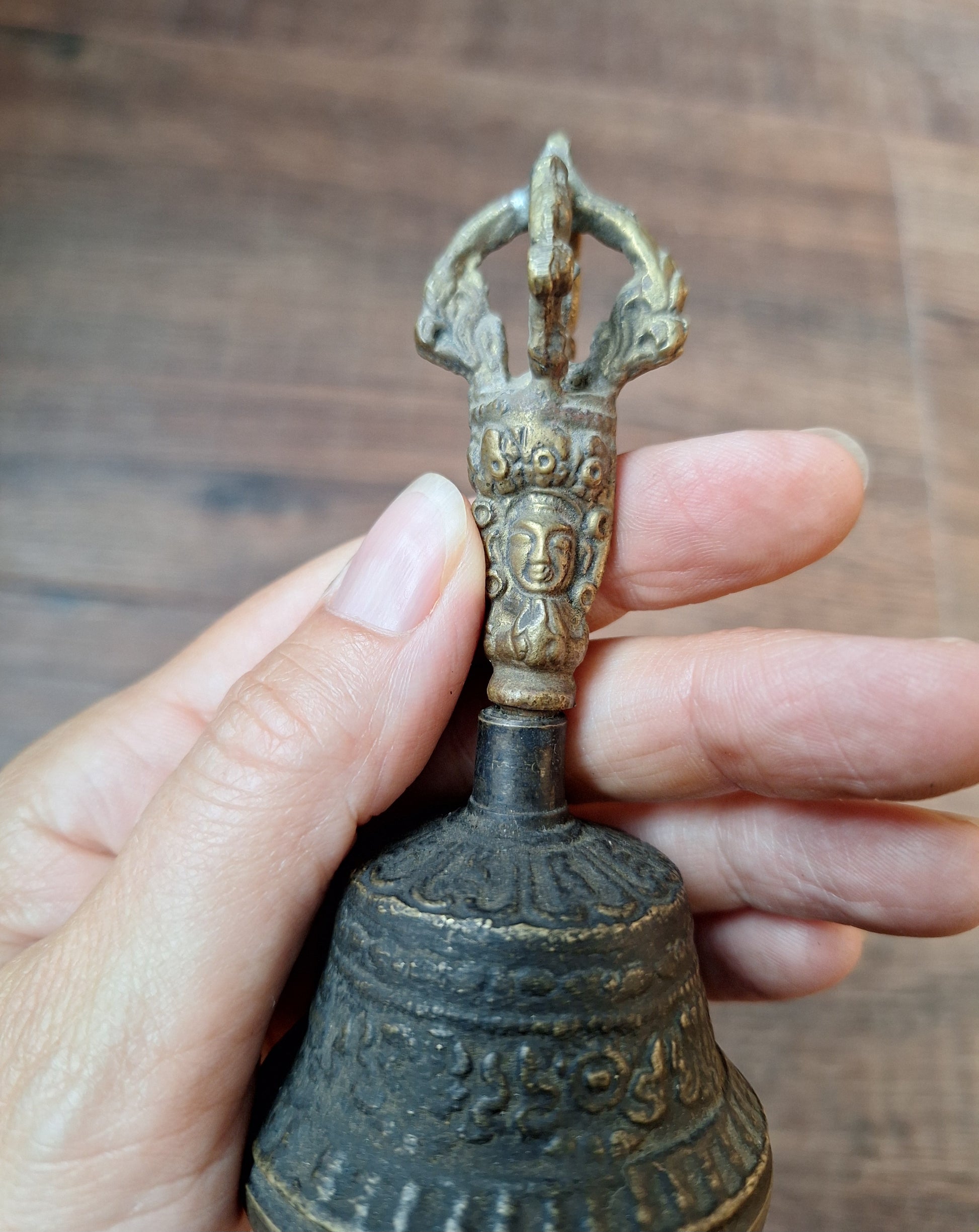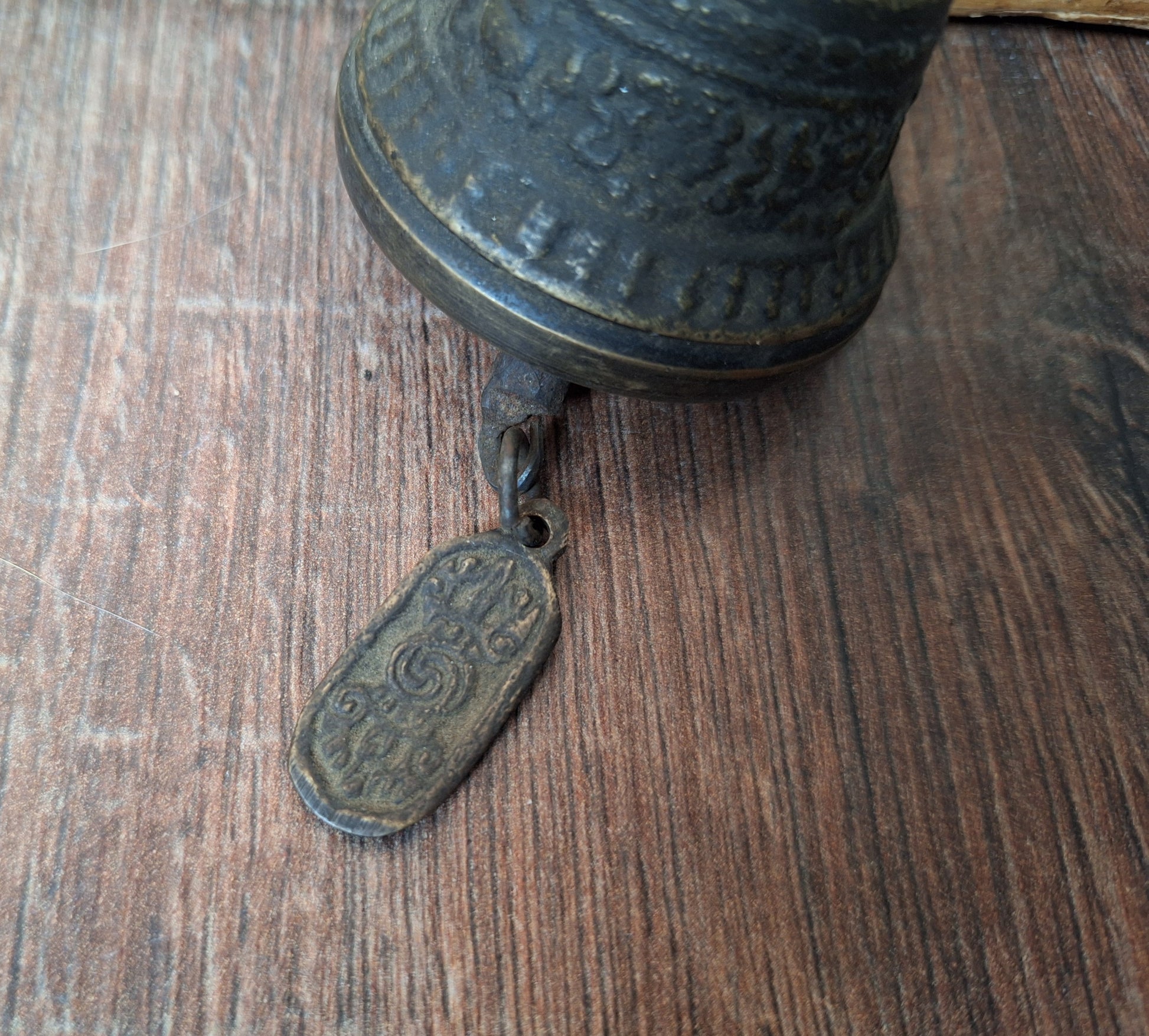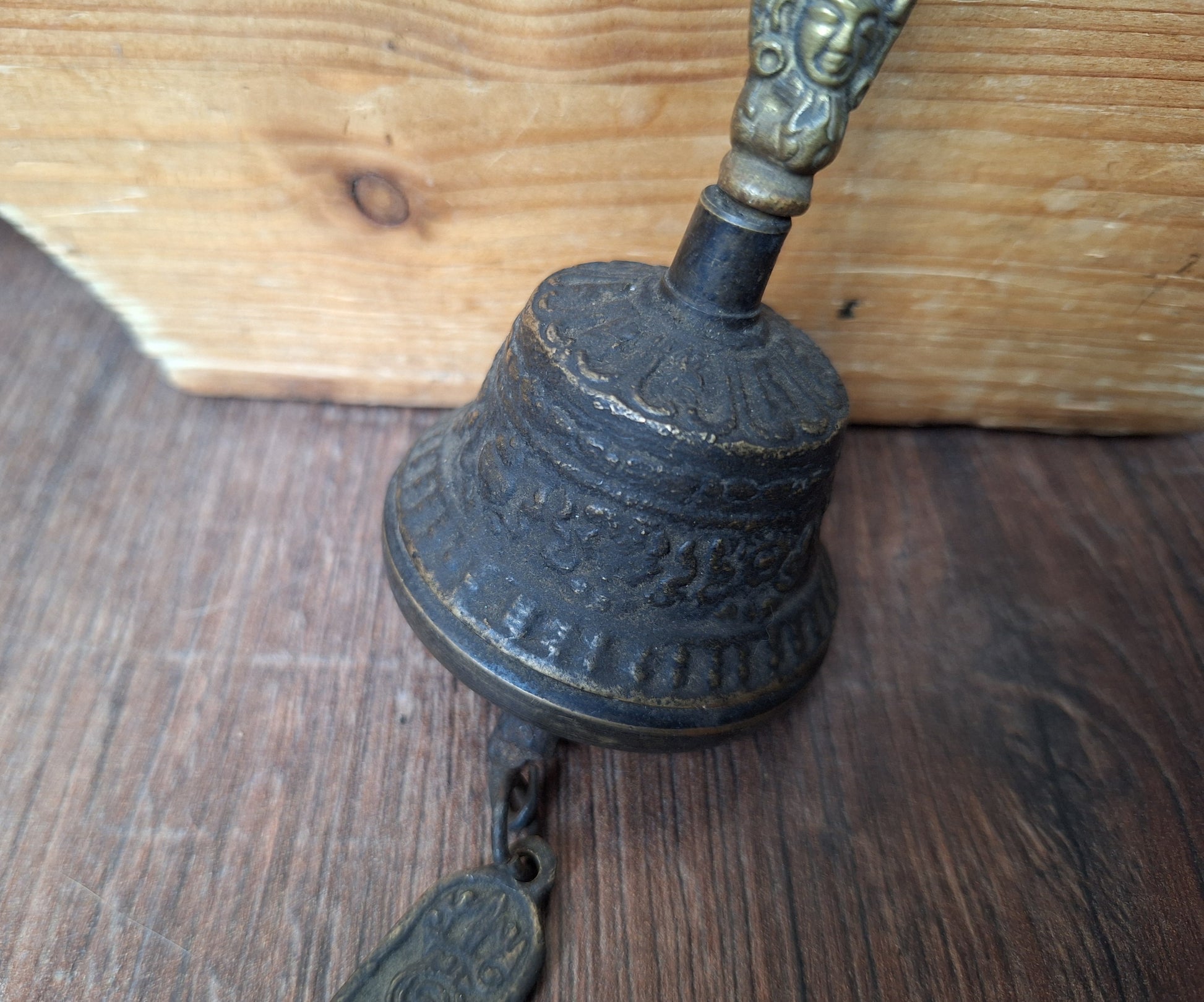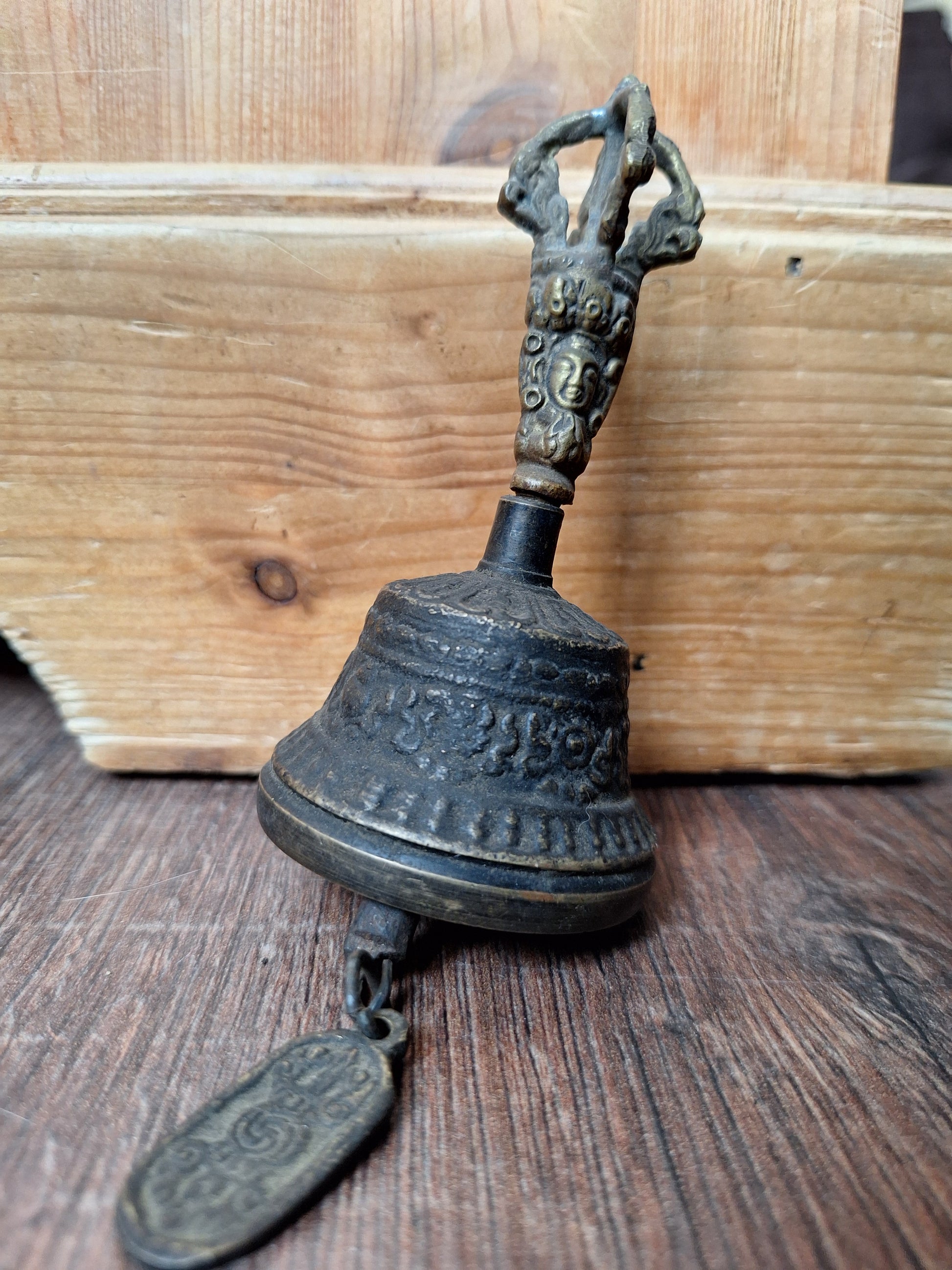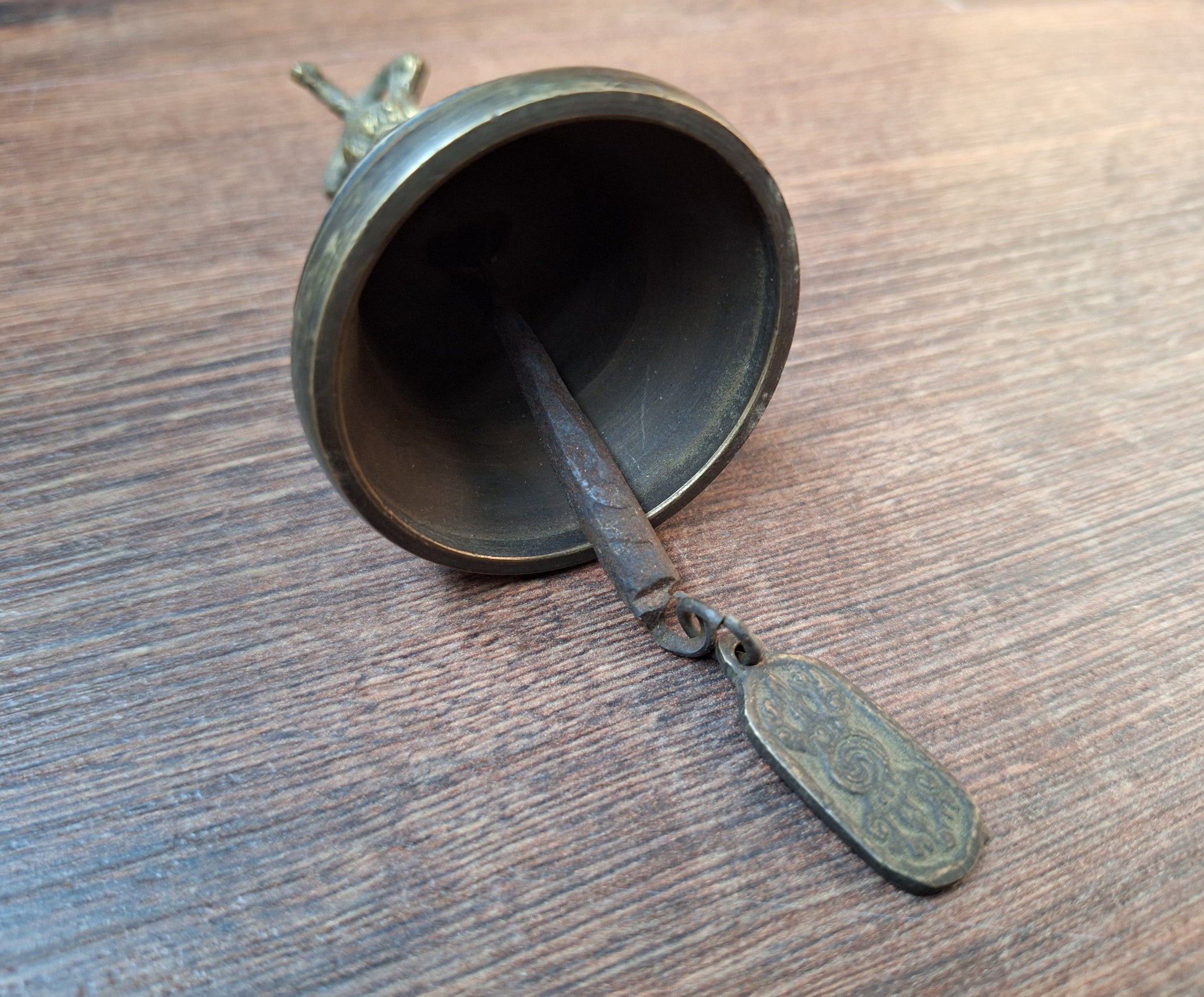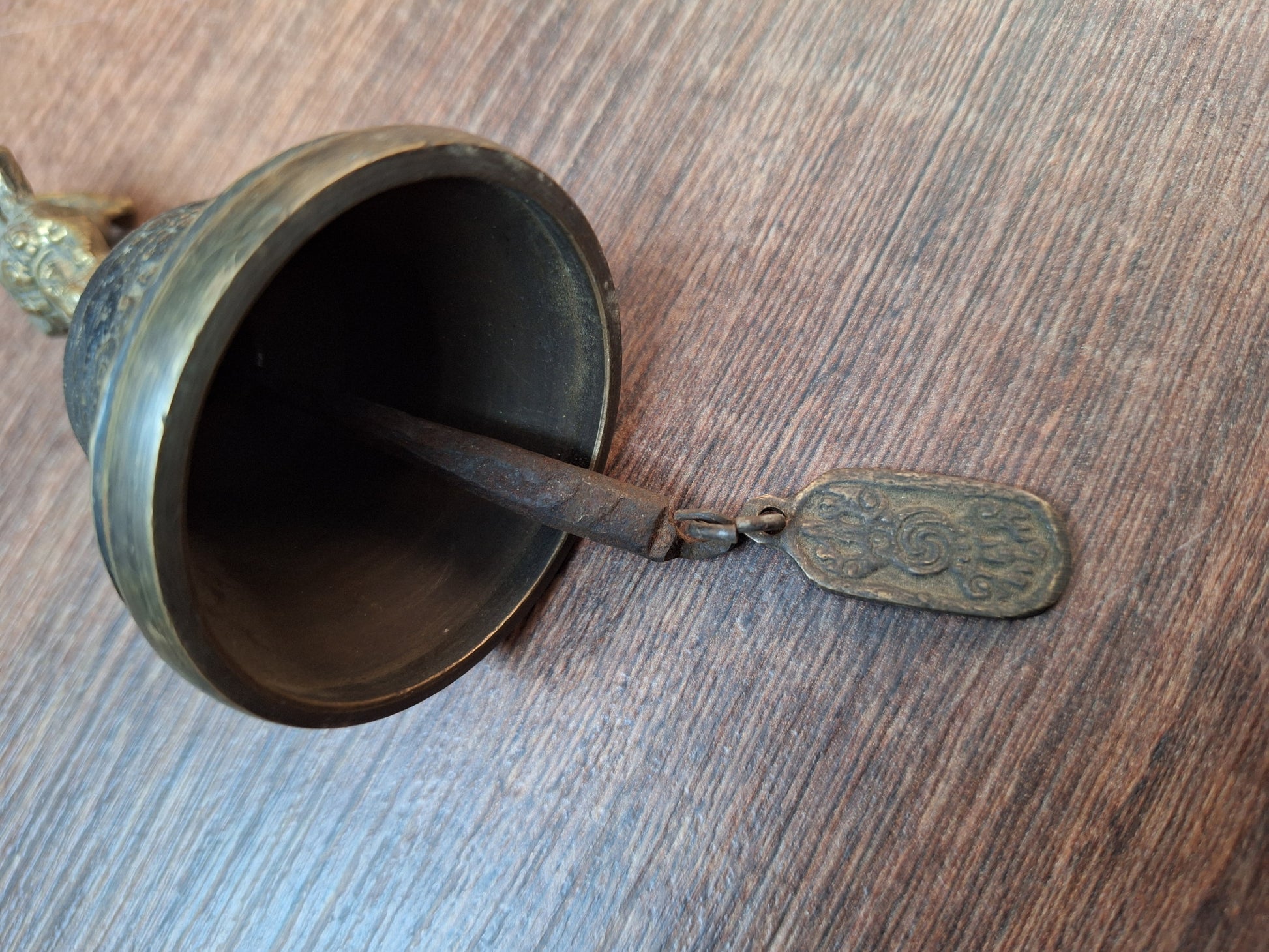Seawolf Shop
Old altar bell Tibetan Buddhist style, small #3, B-quality
Old altar bell Tibetan Buddhist style, small #3, B-quality
Couldn't load pickup availability
Share
Altar bells such as this one can be used during rituals, ceremonies and healing sessions, especially at the beginning and/or end of the session. They are used for multiple reasons. For example; they clearly mark the beginning and end of the session, making it a period set apart from the rest of the day, their sounds and vibrations cleanse space and energyfields and they call in the helpfull spirits and drive out the heavy ones.
This altar bell has been made in a common Tibetan Buddhist style and is very rich is symbolism. In Tibetan Buddhist practice, a bell such as this is called ‘ghanta’ and commonly forms a pair with a dorje. In that combination, the bell should be held in the left hand and symbolizes the feminine principle of wisdom, as personified by the Great Mother goddess Prajnaparamita. The bell as a whole, with all the traditional depictions on it, can be seen as the mandala of Prajnaparamita:
The hollow of the bell represents the emptiness from which all phenomena arise, the clapper represents form. The sound they create together radiates forth from the void, lingers for a while, and then disappears back into emptiness again.
Close to the rim, a ring of dorjes can be seen; an indestructible circle of protection.
Above this protective border, approximately half way the bell, a depiction of Makaras holding loops of jeweled pendants in between more dorje symbols can be seen. The jeweled pendants symbolize the decoration of the heavenly palace and the dorje’s in this area represent the eight charnel grounds of the mandala. In between the Makaras, eight lotus petals represent the Eight Bodhisattvas.
And at the top of the bell, yet another row of dorjes symbolizes the inner walls and inner protection circle of the mandala.
Also the handle of the bell is filled with symbolism; the face is that of the Great Mother Prajnaparamita. The shapes in the stem below her represent the earth and a vase of treasures. Above the face of the Mother, a lotus pedestal forms the base for the crown of a five-pronged dorje.
As can be seen on the pictures, this bell tells an interesting story. The bell and handle don't seem to match with each other; the bell definitely being older than the handle. Probably at some point in its life, the original handle got damaged or lost, but the bell itself was too valuable to simply throw away. And the bell indeed is a beautiful one; the bronze has become very dark and gained a beautiful patina over time. A bronze tag with the depiction of a dorje has been attached to the clapper.
This bell is approximately 11 centimeters high (measured without the clapper and its tag) and weighs 180 grams. Diameter of the bell, measured at the bottom, is 5 centimeters. The sound is not particularly great, but quite allright; it has a clear high pitch voice, but the vibrations are quickly gone.
